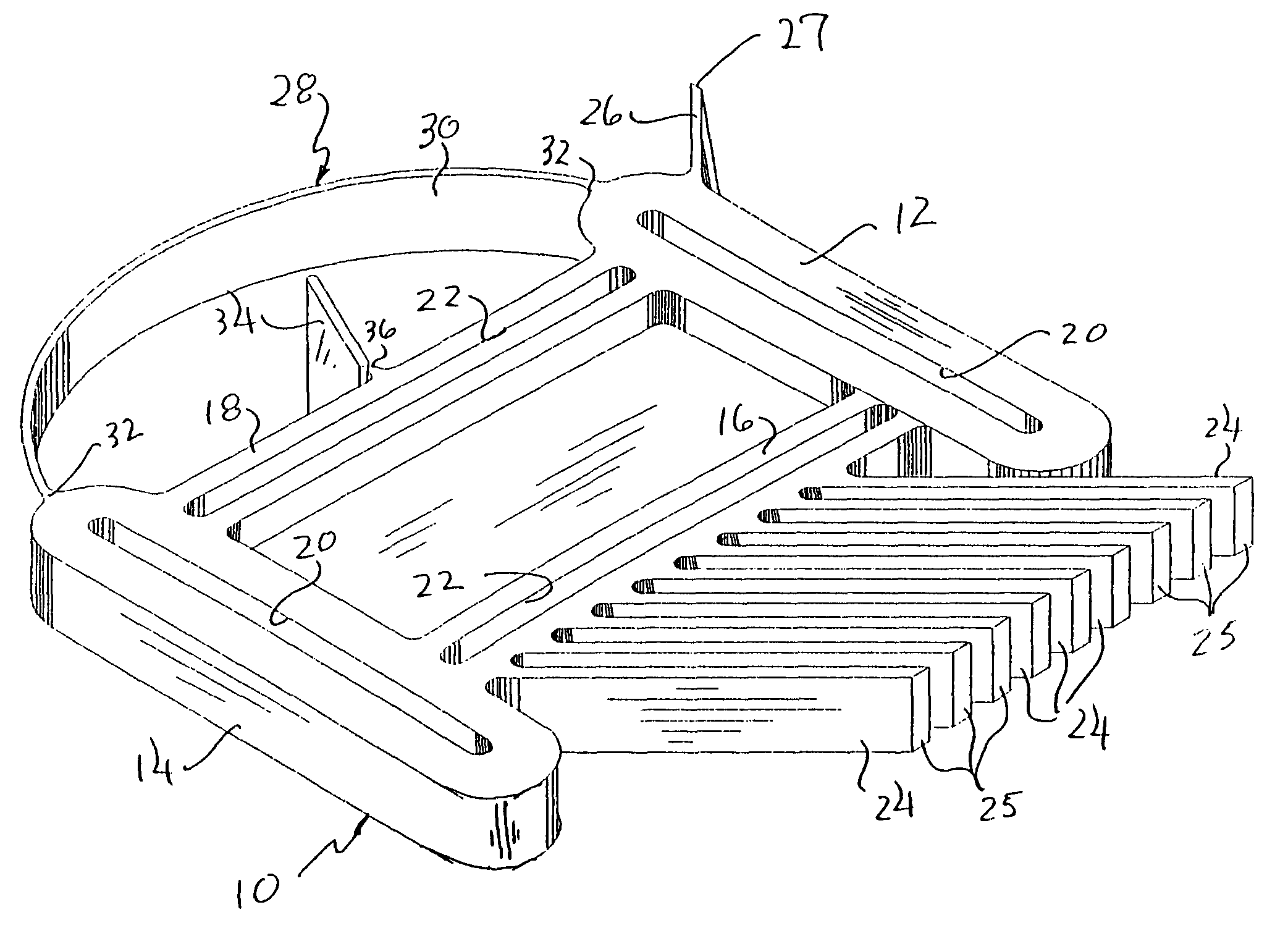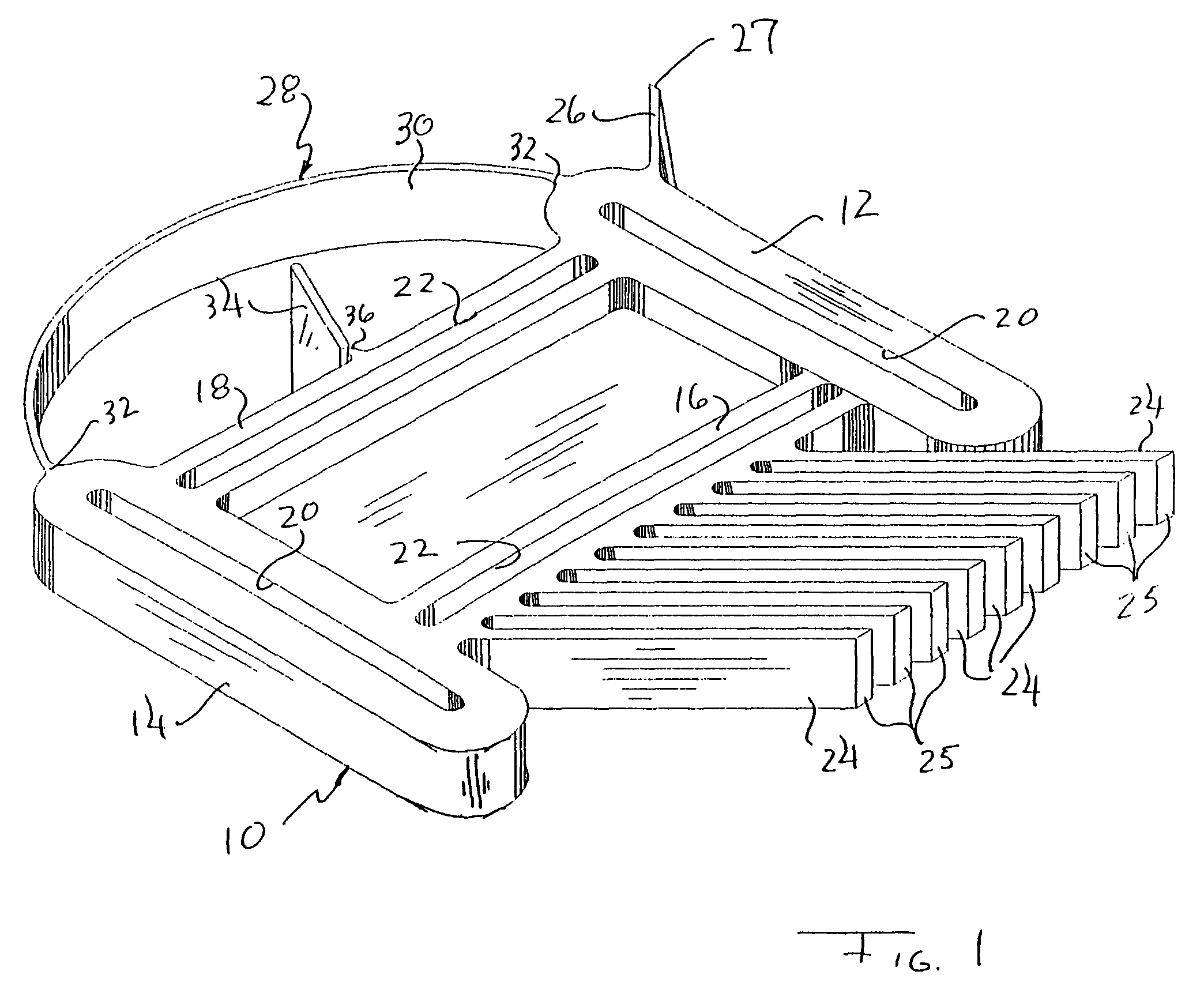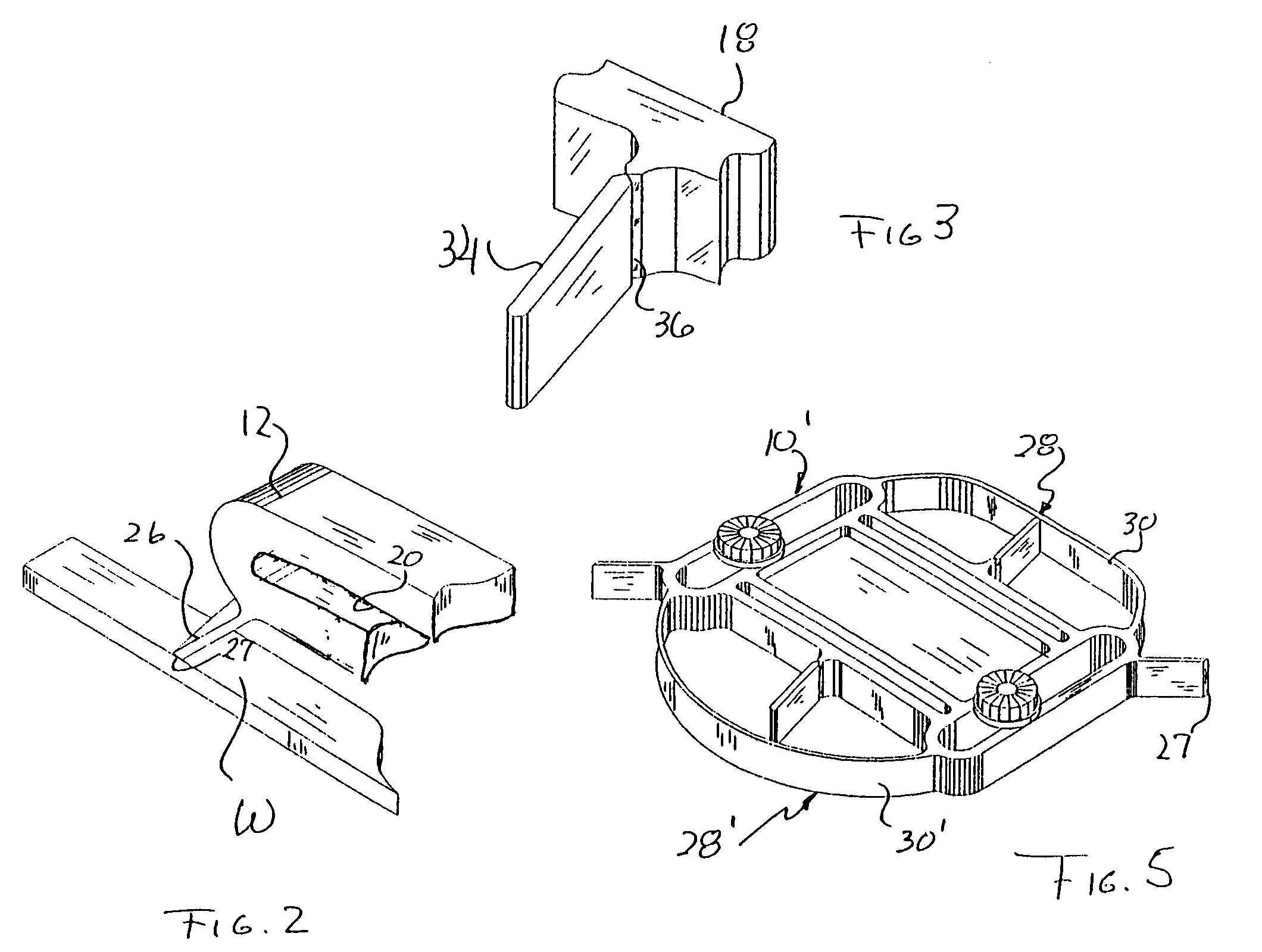Woodworking tension board
a tension board and wood technology, applied in the direction of metal-working machine components, metal working apparatus, manufacturing tools, etc., can solve the problems of not being able to move the stock in both directions, the tension board presently available is believed to be less than optimal in a number of respects, and the least not readily available devices, so as to avoid deficiencies
- Summary
- Abstract
- Description
- Claims
- Application Information
AI Technical Summary
Benefits of technology
Problems solved by technology
Method used
Image
Examples
Embodiment Construction
[0017]Turning now in detail to FIGS. 1 through 3 of the drawings, therein illustrated is a combination tension board embodying the present invention and consisting of a body, generally designated by the numeral 10, having laterally opposite arm portions 12 and 14 and transversely opposite marginal edge portions 16 and 18. The arm portions 12, 14 are slotted at 20, as are the marginal edge portions 16, 18 at 22; albeit other slot arrangements and orientations (e.g., oblique) can be employed, in this embodiment the slots 20 are mutually parallel and are perpendicular to the mutually parallel slots 22.
[0018]Nine parallel fingers, or feathers, 24 project, at an acute included angle, from the marginal edge portion 16 of the body 10, and are formed with flat tips 25 disposed on a common plane lying parallel to the slots 22. A single small finger 26 extends from the arm 12, and also terminates in a flat contact surface 27.
[0019]An arcuate bow component, generally designated by the numeral ...
PUM
| Property | Measurement | Unit |
|---|---|---|
| tension | aaaaa | aaaaa |
| force | aaaaa | aaaaa |
| rigidity | aaaaa | aaaaa |
Abstract
Description
Claims
Application Information
 Login to View More
Login to View More - R&D
- Intellectual Property
- Life Sciences
- Materials
- Tech Scout
- Unparalleled Data Quality
- Higher Quality Content
- 60% Fewer Hallucinations
Browse by: Latest US Patents, China's latest patents, Technical Efficacy Thesaurus, Application Domain, Technology Topic, Popular Technical Reports.
© 2025 PatSnap. All rights reserved.Legal|Privacy policy|Modern Slavery Act Transparency Statement|Sitemap|About US| Contact US: help@patsnap.com



